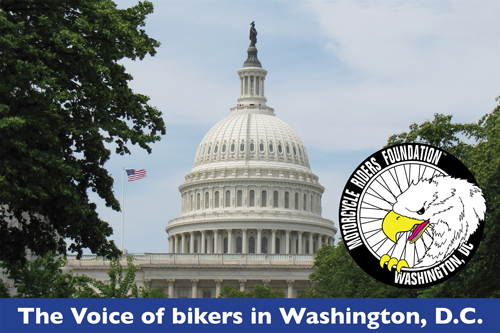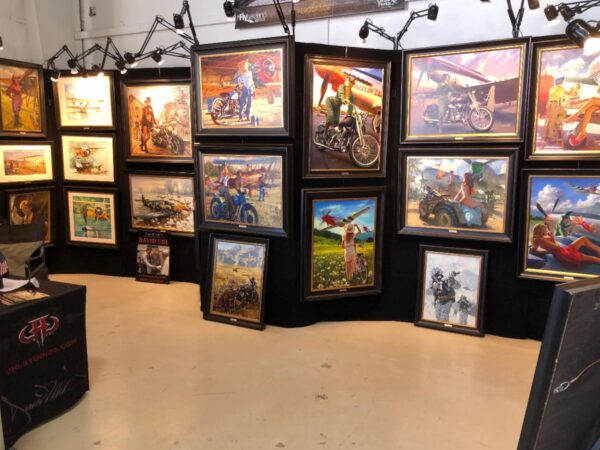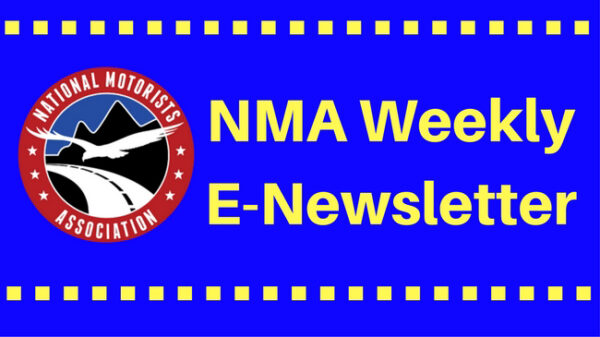Dyna Chain Drive Installation
By Bandit |

Right in the middle of our move operation to South Dakota Jeremiah strips his rear belt of all its teeth. This is not the first time. I just checked all the forums and didn’t find anything conclusive. Is he too hard on his belt with hole-shots and excessive acceleration? Did he adjust the belt too tight or too loose? Did it have anything to do with the belt?

I remember Ben Kudon testing a primary belt by cutting sections out of it to make it slimmer until the belt was about a ½ inch wide and it still worked. On the other-hand rear belts are not perfect. A week before I rode to Sturgis in the ‘90s, I rode out to Ventura fairgrounds on my dresser. My belt picked up a chunk of gravel and punctured it. It made for an all-day operation to replace the rear belt. If I had a problem with a chain, which is rare, we could pop the masterlink and replace it, bada-bing.

I spoke to Micah McCloskey a 40-year shop owner and he said, “I’ve run rear belts for 100,000s of miles without ever an issue. They are golden. I always load the belt before dumping the clutch. If you adjust a belt too tight it will break. If it’s too loose you will shear teeth.”

So, back to Jeremiah’s issue. He decided to switch to chain and started to research. He’s a persnickety soul with two elements to his criteria. One is cost or the deal. The other is quality. After several months and plenty of rumors about one company over another he came up with a kit from Drive Systems.

It included a 530 O-ring chain (black) with stainless pins, a light steel rear sprocket (50-tooth), the proper spacer and a heavy, silver anodized silver trans sprocket (24-tooth). The Superlite kit came from Series Performance.
His first issue was trying to find all the components. Seems everything is back-ordered, especially 51-tooth rear sprockets. He was desperate. His bike was down. He chose to run with the 50-tooth for just slightly higher gearing.
So, just as I sold my war-era-built 1946 Indian to my brother, Dr. Hamster, and we loaded it onto a flatbed for transportation back to Santa Monica, Jeremiah pushed his 2009 Dyna into the packing torn shop for this installation.


Jeremiah removed the automatic primary chain adjuster and between the two of us we had the sockets to remove the engine and trans (left hand) nuts. The primary drive came off as one heavy piece complete. James found a piece of wood plank to place it on and removed it from the action lift, rapidly scattered with tools.

Next, he needed to remove the Allens from the starter motor, which took a long extension, a pivot socket and the proper Allen to free the starter and back it off slightly. I also suggested that we remove the ground strap from the battery to prevent any scary battery engagement.

The bolts were removed from the inner primary and it slipped off with some banging. That left the large 2 ¼ sprocket nut (right-handed threads). First, we didn’t have a massive socket large enough.

With the new 6-speed trans, the nut was enlarged, and I didn’t have the JIMS special tool. Jeremiah jumped into his truck and jammed to Settles Custom Motorcycles for the custom socket Larry modified to fit over the mainshaft and reach the thin bolt. It worked, but my impact driver didn’t have the power. We tried heat, prybars and whatever we could throw at it.

Jeremiah jumped in his truck and jammed to Harbor freight for a more powerful impact driver, returned and got the job done. Sometimes it’s the driver and sometimes the air compressor is the issue.
Jeremiah didn’t need to remove his chromed chain guard but decided to pull it out of the way. He stripped the front bold Allen head and cut it off with a die-grinder. He considered running without the guard, but I suggested against it. A busted chain can be notoriously dangerous, way more dangerous than a loose belt.

We cleaned all the components and started to assemble the new chain system. Jeremiah tried to slip his new trans sprocket into place and it wouldn’t go. “It doesn’t have the correct splines, fuck.” That wasn’t the case but making sure you have all the correct elements is critical. The offset transmission sprocket needed to align with the spacer and sprocket on the wheel. Fortunately, Jeremiah hadn’t changed his rear wheel for something custom or wider.
“You need a very tight sprocket,” Micah added. “It’s called interference fit, so it won’t tear up the transmission splines.”

We struggled with the trans sprocket, cleaned the splines on the transmission and wire brushed the splines on the sprocket. It started to gradually rock into place.
Fortunately, Jeremiah had his manual, and we could sorta follow the tightening instructions. We used a large Phillips screwdriver to hold the sprocket from turning as we turned the nut against the sprocket. It was so tight we couldn’t tell when it bottomed.
Jeremiah called a tech for more advice because the manual called for 35-foot pounds of torque. That didn’t seem like enough. The tech said to tighten the sprocket down to 100 ft-pounds, back off and tighten it to 35 plus a quarter turn to install the locking plate. The nut was finally installed with red Loctite and the locking plate. Jeremiah always follows the manual torque specs. The red Loctite makes the bastard so hard to remove.

The next day we jacked up the bike using an old floor jack I built in the ‘70s. Jeremiah messed with the wheel, while I worked at welding a nut to the busted chainguard 5/16 bolt to remove it. Ultimately it did and I chased the threads.
Jeremiah removed the rear wheel, he questioned the new spacer/sprocket mounting system, which used 10 bolts instead of five. We went ahead with it, but I’m sure the manufacturer felt more confident with shorter bolts. But notorious pulley bolts are the bane of riders all over the country. Maybe they loosen because of their length, abuse, or aftermarket wheels made with inferior materials.

In this case, five bolts hold the spacer in place and five bolts hold the sprocket to the spacer. He used red Locktite and lock washers on all of them. Then we started to put the wheel back in place.
For some reason we fought the axle out of the wheel. This time we slathered it with anti-seize and started testing our luck. We discovered a tight wheel spacer from the left side of the swingarm. We trimmed the edges with a knife. It was better but still not easy. We ran a hone through it a couple of times, and bada-bing it was golden.

Finally, it was time to install the chain, which Jeremiah shortened with James’ chain breaker. It was cool and drove the pin completely out. But then we started to install the new masterlink that needed to be riveted into place. There was some discussion about rivets vs. the normal and historic clips. Someone convinced Jeremiah that rivets were stronger. I wondered whether it was another ploy to make folks purchase a product over and over.
As it turned out manufacturers use the rivets for ease of installation. Here are some comments from motorcycle forums:

I can see and agree that the rivet style link is the most secure, but just for purposes of personal experience over decades of motorcycle use, I’ll admit to never using anything but the old-school clip masterlink. Riding and racing motorcycles of all kinds and sizes since 1969. I never had a masterlink failure. I raced enduros for decades, often even on open-class 2-strokes…no problems. I also had several hot rod Kawasaki Z1 series street bikes with modified engines…no problems. Even had a couple of those Kawasaki H2 750 2-stroke triples…no problems. I even ran some of those crapola Bikemaster cheapest-chains-you-could-buy on a KLR650 with a master link and rode that bike like a dirt bike…no problems…other than short chain life.
–Candy Ass
Clip type master links are not ‘unsafe’. They have been used successfully for what? 100+ years and continue to be used. The advantage of a clip link is convenience. You can remove the chain without disassembling the whole rear suspension. Very useful if you make large changes in gearing which is required for many forms of racing.
Also, rivet links are far from idiot proof. It takes care and knowledge to install one properly. It’s easy to compress it too far and damage the O-rings. It’s also easy to end up not swaging the pins enough which could be unsafe.
I’m certain the main reason we see rivet links on new bikes is that riveting is much more factory production friendly. A machine can stamp them into chains 20 times a second. No so for a clip.

The rivet notion takes a whole different and demanding mindset. An old school builder told us about his heavy ballpeen hammer and supporting rods to peen the extended ends. Jeremiah wanted nothing of that and bought a $100 chain breaker tool (made in China) with an anvil attachment and peening rod. It was cool but didn’t work.

First the hole sizes in the guide plate were too small and out of alignment. We drilled out the holes one size larger than ¼ inch. Finally, we were able to press the pins through the final plate. We also discovered that the back-up plate behind the link was not machined properly. We needed to push the pins through the support link just long enough to match the length of the rest of the chain pins. If we over-pressed it, it would bind and damage the O-rings.

Okay, so we started the peening process, and it was a bitch. The instructions called for very little peening. I watched a YouTube with a similar chain installation tool, but maybe it wasn’t made in China. They suggested peening it to the same diameter as the other pins on the chain.

With a set of micrometers, I measured it after Jeremiah strained to peen one pin then another. We ultimately ended up with the pin .010 over the original pin size. If we could have followed the YouTube instructions, it would have been almost .020 over the original pin size.
I would never use this type of riveted master link for several reasons. First ease of assembly. Second would be for ease of disassembly in an emergency or for gearing changes.
Jeremiah tested is new system around the block. He wasn’t happy with the softer acceleration. Then he hit the freeway and jammed to 150 mph. He still wasn’t happy, but his top end jumped from 135 mph. The chain also slapped his passenger peg mount on the swingarm (which is a bad notion for the passenger, lotsa vibration).
We found a piece of Teflon and prepared to make a guide, but Bung King makes a piece just for this application. See the description below.
Product Description
When swapping a ‘06 and up Dyna over to a chain drive, in most cases during riding, the chain will contact the passenger peg mount, and some the inner primary as well. This will cause a groove to be worn in the aluminum peg mount, premature chain wear and some funny noises from time to time.
With our chain slider in place, the chain will contact the Delrin block instead of your aluminum parts when your suspension is in rebound. The block attaches with the included powder-coated steel bracket to the front bolt of the passenger peg mounting bracket.

Jeremiah installed it by removing one of the Torx peg mounting fasteners, with the chain in place. He bolted it down with the same fastener and some blue Loctite. He was a little concerned about its closeness to the fastener, but we will see after some testing. He’s on the road now.
Sources:

Drive Systems

Harley-Davidson’s renewed focus on touring bikes drives upbeat forecast
By Wayfarer |
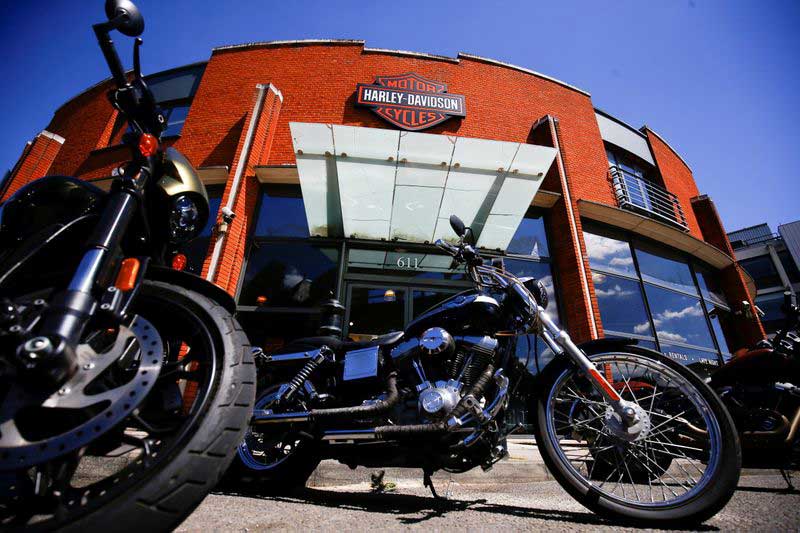
by Reuters from https://www.investing.com
U.S. motorcycle maker Harley-Davidson (NYSE:HOG) on Monday reported a better-than-expected quarterly profit and raised its full-year forecast for sales growth, as its focus on bigger and profitable touring bikes boost demand, sending its shares up more than 8%.
Since the middle of last year, the Milwaukee, Wisconsin-based company, which has struggled to grow sales for the past several years, shifted its focus to big bikes, traditional markets such as the United States and Europe, and older and wealthier customers.
In February, the motorcycle maker unveiled a new turnaround plan that targets low double-digit earnings growth through 2025.
The company said its retail sales, a measure of demand at its dealerships, surged 30% to 32,800 motorcycles in North America in its first quarter.
Retail sales in Europe, Harley’s second biggest market outside the United States, slumped 36% to 4,900 motorcycles, due to the company’s decision to stop selling its smaller and less profitable Street or Sportster motorcycles and shipping delays as a result of the COVID-19 pandemic.
The company said lower sales incentives and a cut in its selling, general and administrative expense lifted its motorcycle business operating margin by over 10 points to 18.5%.
It now expects motorcycles business revenue to grow in the range of 30% to 35% in 2021, up from its prior estimate of between 20% and 25%.
Harley’s net income jumped over threefold to $259 million in the quarter ended March 28, from $70 million a year earlier. On an adjusted basis, the company earned $1.68 per share, beating analysts’ average estimate of 88 cents per share, according to IBES data from Refinitiv.
The company’s revenue rose to $1.42 billion from about $1.30 billion.
Harley-Davidson hit with 56% EU tariff effectively blocking it from the EU market
By Wayfarer |
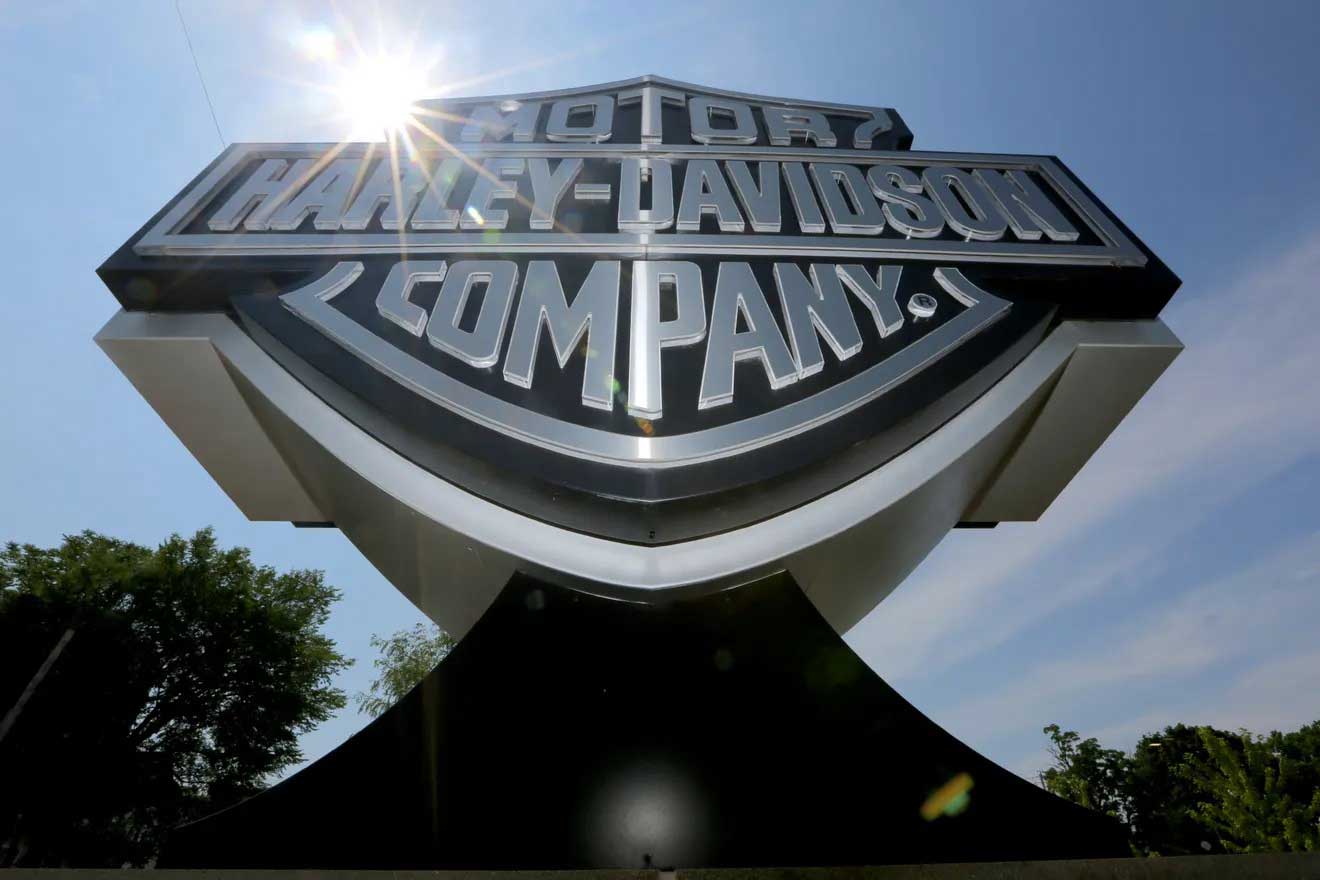
by Rick Barrett from https://www.jsonline.com
Harley-Davidson hit with 56% EU tariff, an ‘unprecedented situation’ that will block the motorcycle maker from the market, CEO says
Harley-Davidson Inc. has been slapped with a 56% European Union tariff on all its motorcycles, the company said Monday, effectively blocking it from the EU market.
Harley said it would appeal the ruling scheduled to go into effect in June.
“This is an unprecedented situation and underscores the very real harm of an escalating trade war to our stakeholders on both sides of the Atlantic. The potential impact of this decision on our manufacturing operations and overall ability to compete in Europe is significant,” Jochen Zeitz, Harley chairman, president and CEO, said in a statement.
Europe is Harley’s second largest market after the United States.
“Imposing an import tariff on all Harley-Davidson motorcycles goes against all notions of free trade and, if implemented, these increased tariffs will pose a targeted competitive disadvantage for our products, against those of our European competitors,” Zeitz added.
In 2018, the European Union placed a 25% incremental tariff (31% total tariff) on motorcycles imported into the EU from the United States.
Under the latest proposal, the EU would place a 50% incremental tariff on U.S. motorcycles for a total tariff of 56%. The ruling would even apply to Harleys manufactured in Thailand, where the company had set up operations to get around the 2018 EU tariff.
Monday, Harley posted a quarterly profit of $259 million, or $1.68 a share, up from $70 million, or 45 cents a share, in the year-earlier period.
Revenue rose to $1.4 billion from $1.3 billion a year earlier.
“The actions we have taken to reshape the business are having a positive impact on our results, especially for our most important North American region,” Zeitz said.
Harley-Davidson shares closed Monday up $3.91 a share, or nearly 10%, on Monday to $44.29.
Harley-Davidson To Vigorously Defend Itself Following Aggressive EU Tariff Ruling – Quick Facts
from https://www.rttnews.com
Harley-Davidson, Inc. (HOG) announced Monday that it has received notification from the Economic Ministry of Belgium that it would be subject to the revocation of Binding Origin Information (BOI) credentials, effective April 19, 2021, following a request from the European Union (EU).
Harley-Davidson said it will be lodging an immediate legal challenge to this decision.
Since 2019, the company has operated with BOI regulatory credentials, allowing it to supply its EU markets with certain motorcycles produced at its international manufacturing facilities at tariff rates of 6%.
The EU’s new ruling will apply to the entire Harley-Davidson product portfolio and will effectively prohibit the company from functioning competitively in Europe.
From June 2021, all Harley-Davidson products, regardless of origin, will be subject to a 56% import tariff within the EU.
In 2018, the European Union placed a 25% incremental tariff (31% total tariff) on motorcycles imported into the EU from the U.S., effective June 22, 2018. The tariff is scheduled to increase to a 50% incremental tariff (56% total tariff) effective June 1, 2021.
European OEMs, including motorcycle manufacturers, will continue operations with significantly lower import tariffs to the U.S. ranging from 1.2% for up to 800cc products to 2.4% for over 800cc products, and with automobiles at 2.5%.
Harley-Davidson Hit With EU Tariff Ruling
by Alistair MacDonald from https://www.wsj.com
Motorcycle maker says ruling would subject its products to 56% import tariff within the EU.
Harley-Davidson Inc. has been hit with a European Union import ruling that the motorcycle maker says would impose an import tariff of 56% on its products and keep it from functioning competitively in Europe.
The Milwaukee-based company announced the ruling along with better-than-expected sales and profit for the first quarter, news of which lifted the stock to a new multiyear high.
Harley-Davidson has been one of the highest-profile U.S. casualties of recent trade disputes, after the EU put a 25% duty on its bikes and other U.S. goods in 2018. Those levies were a response to tariffs the Trump administration imposed on steel and aluminum from producers in Europe and elsewhere.
On Monday, Harley-Davidson said Belgium’s Economic Ministry, on behalf of the EU, had notified the company that it was revoking an agreement that allowed the business to supply Europe with certain motorcycles produced at its international manufacturing facilities at tariff rates of 6%.
Harley-Davidson said the EU ruling would apply to its entire lineup and subject all products—regardless of origin—to a 56% import tariff within the trade bloc beginning June 1.
J.J. Solari Goes to Hollywood
By Wayfarer |
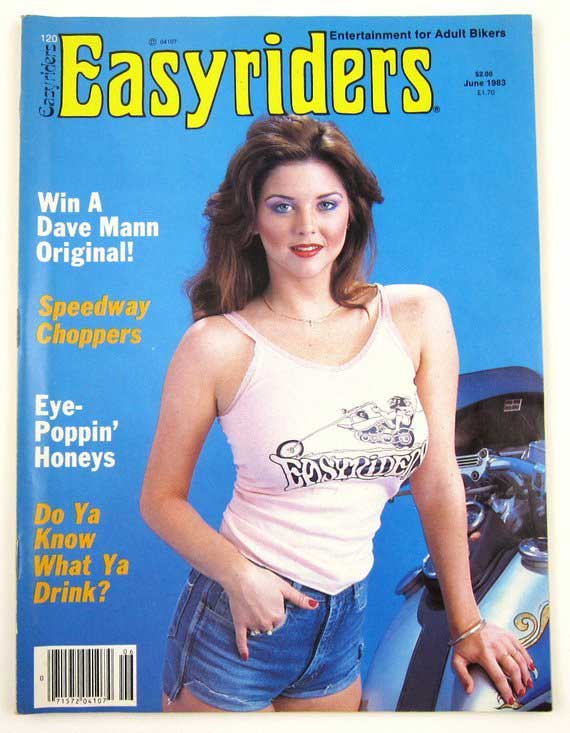
J.J. Solari Goes to Hollywood, I forgot, he lives there…
His acceptance speech for the Pulitzer Prize for poetry, Burma Shave category
You know, when I started my writing career writing comedy porn stories for magazines like Nugget, Rascal, Topper and Vue and the street vending machine porn rags that were the craze in the late ‘70s, people said I would never make it as a writer because those magazines were filth. This is them talking. Not me.
Click Here to read another new work from JJ Solari only on Bikernet.
Join the Cantina for exclusive content – Subscribe Today.
https://www.bikernet.com/pages/custom/subscription.aspx
J.J. Solari Goes to Hollywood, I forgot, he lives there…
By J. J. Solari |

“I would like to thank the Academy or whatever the fuck this roomful of people is who wish they were me at this moment……for giving me this award for poetry. You know, when I started my writing career writing comedy porn stories for magazines like Nugget, Rascal, Topper and Vue and the street vending machine porn rags that were the craze in the late ‘70s, people said I would never make it as a writer because those magazines were filth. This is them talking. Not me.

But, yeah, they WERE filth. I mean, it’s not as though they were wrong about that. But can we move on? I wrote filth but it was comedy filth. I wrote COMEDY porn stories. Do you here-gathered know anything about the porn industry?

Hey, I see you old codgers wondering if your wives sitting next to you are glaring at you right now to see how you are reacting to this question. I can see your nervous faces. Hey, fuck them bitches, boys.

Which in fact is what porn stories are: they’re stories of guys fucking bitches, like your wives sitting here this evening, but the IDEA of the whole thing is to give the guy reading it a boner, so he’ll jack off. I know what you’re saying: “That sounds like total fucking faggotry to me.”
Ya know, it sounds like total fucking faggotry to me too, and that is why I would like to continue with my acceptance speech and just kinda leave this for now.

I then graduated to Easyriders, although I suspect that most of you here in this room, and in fact in every other room on earth, would say that going from porn to Easyriders was not graduating, it was
the final step down into obscurity and uselessness. Ya know, I get that a LOT and I try not to pay a lot of attention to it.
Once in a while, yeah, it kind of intrudes into my consciousness and basically ruins my day for a few hours, I gotta admit. In fact, I seem to be drifting-off right now since bringing this up.

I have here a bottle of Riazul Tequila that I brought here for the occasion, I’m gonna have a swig right now, ok?
Ok. Now then. So, I went from porn to Easyriders and a lotta people say that’s going backwards, but not for me. Easyriders readers didn’t have to read porn to get boners and fuck chicks, that’s all they were doing already, getting boners and fucking chicks.

So, all I had to do was be funny. Piece o’ cake. Plus, you had to be careful not to piss them off. Bikers have a lot of notions all you hahaha commie fucking assholes in THIS room would not approve of. Hey, fuck you, grampaw. When did YOU win the fucking Pulitzer Prize for poetry. That’ll happen when I quit fuckin’ your wife.
Where was I?

Oh, yes, Easyriders. So as far as I myself was concerned, I figured E.R. was actually for me the highest I could ever go. Ok, ok, ok, hold on everyone, let’s give mr. child-molester over there with the bow tie who is having a fucking conniption fit, let’s give him his moment of glory.

Ok, sir, you have the floor. What is your fucking problem? No no no, don’t repeat it, I heard you loud and clear. For any of you deaf codgers who didn’t hear, Senyore Perfect in All Things wants to know why Easyriders, which is one word, has TWO capitalized and separated letters in its abbreviation version. Wherein, I would ask Mister Hasta Know Everything why his daughter has syphillis when the only thing she fucks is hardcore dykes from the Daughters of Sappho island of Lesbos on Planet Cunt? Yeah, that’s what I thought: you gut no answer. Prick.
Which brings me now to my award for poetry. Combining ejaculate with a Vice President of the United States, teeth, and references to other bureaucrats contributing semen to the same set of teeth, all within four brief stanzas ending with the time-honored mention of a famous road-sign advertising campaign from the highways of the ‘40s……..I agree: it’s fucking more bitchin’ than the 30 year old Sophia Loren sitting on your face. You ever see Boy In A Dolphin?….

She comes up onto that rowboat
from the water and them two fucking milk hydrants on her chest are damn near inside your own gullet as you sit there dumbfounded……..Ain’t nuthin’ like what I’m seein’ in this room your endentulate bags o’ bones are callin WIVES. Holy shit.
Anyway, thanks for the award, and God Bless the Creative Arts!”

Save the Motorcyclist Advisory Council: Ask You Representative to Cosponsor H.R. 2141
By Bandit |
Congress is back from Easter break and it’s time for them to hear from bikers! Last month Congressman Mike Gallagher of Wisconsin and a bipartisan group of House members introduced H.R. 2141, the Motorcyclist Advisory Reauthorization Act. As you may remember the Motorcyclist Advisory Council (MAC) is a group within the U.S. Department of Transportation that serves as the only official forum for motorcyclists to discuss motorcycle issues with the federal government. The MAC is set to expire and be disbanded September 30th, 2021 if Congress doesn’t act!
We need to help Congressman Gallagher gain cosponsors to H.R. 2141 and ensure motorcyclists continue to have an official voice within the federal government. Click here to contact your member of the U.S. House of Representatives and ask them to cosponsor H.R. 2141.
Harley-Davidson delivers strong first quarter financial results and raises full-year financial guidance
By Bandit |
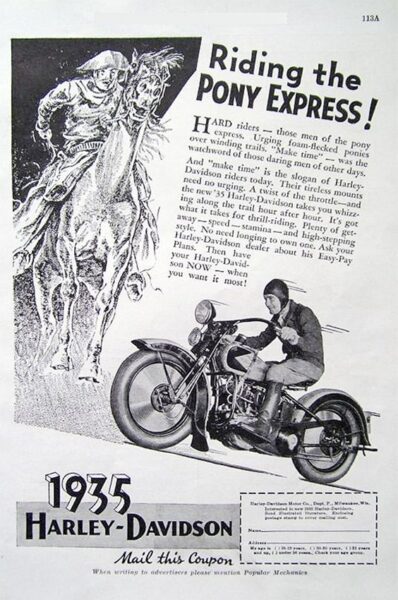
MILWAUKEE, April 19, 2021 /PRNewswire/ — Harley-Davidson, Inc. (“Harley-Davidson”) (NYSE:HOG) today reported first quarter results.
“I am very pleased with the pace of recovery that we have seen across our business, as demonstrated by the strong financial results this quarter. The actions we have taken to reshape the business are having a positive impact on our results, especially for our most important North American region,” said Jochen Zeitz, chairman, president and CEO, Harley-Davidson.
“We can see the initial signs of consumer excitement and optimism returning and I am confident Harley-Davidson in 2021 is a significantly leaner, faster, and more efficient organization which is ready to win and successfully deliver on our 5-year Hardwire strategy, as the most desirable motorcycle brand in the world.”
First Quarter 2021 Highlights, Results and Related Guidance
Delivered Q1 GAAP diluted EPS of $1.68, up $1.23 over Q1 2020
Motorcycles and Related Products (Motorcycles) segment revenue up 12 percent amid strong retail demand for Touring motorcycles
Significantly improved Motorcycles segment gross margin and operating margin driven by favorable mix following the Rewire product portfolio adjustments, lower sales incentives and reduced SG&A
Financial Services segment Q1 2021 operating income growth of $96 million over Q1 2020 driven by a favorable adjustment to the provision for credit losses
Increased Q1 cash flow from operations to $163 million, up $171 million over Q1 2020
Increasing 2021 full-year guidance on Motorcycles segment revenue, Motorcycles segment operating margin assuming the company is able to mitigate additional EU tariffs, and Financial Services segment operating income
First Quarter 2021 Results
Harley-Davidson, Inc. Consolidated Financial Results
Consolidated revenue was up 10 percent in the first quarter over Q1 2020. Bottom-line results reflect Q1 significant net income improvement with strong results in both the Motorcycles and the Financial Services segments.
Harley-Davidson Retail Motorcycle Sales
Global retail motorcycle sales in the first quarter were up 9 percent, driven by very strong Q1 U.S. retail growth over Q1 prior year. EMEA retail sales declines were impacted by continued COVID lockdowns, the company’s decision not to continue selling Street or Sportster motorcycles in Europe and shipping delays brought on by the pandemic. In Latin America, retail sales were impacted by the reduction in dealers and pricing actions across the portfolio, which were executed as part of the Rewire strategy.
Motorcycles and Related Products Segment Results
Revenue from the Motorcycles and Related Products segment was up during the first quarter primarily driven by a 3 percent increase in wholesale shipments and a favorable mix of Touring motorcycles. First quarter global retail motorcycle sales were up 9 percent, driven by a 31 percent retail growth in the United States.
Parts and Accessories revenue was mostly in-line with Motorcycles revenue growth while General Merchandise was up 2 percent over Q1 2020.
First quarter gross margin was up 5.1 percentage points to Q1 prior year while first quarter operating margin finished up 10.8 percentage points over Q1 prior year due to stronger mix, the near elimination of sales incentives and lower spending versus prior year.
Financial Services Segment Results
Financial Services segment operating income was up significantly over prior year in the first quarter, primarily driven by a $102 million decrease in the provision for credit losses.
Other Results
Harley-Davidson generated $163 million of cash from operating activities during Q1 2021, $171 million favorable to Q1 2020. Cash and cash equivalents were $2.3 billion at the end of the first quarter, up $856 million to the end of the prior year first quarter.
Tax Rate – The company’s first quarter effective tax rate was 24 percent.
Dividends – The company paid cash dividends of $0.15 per share in Q1 2021.
2021 Outlook
As a result of its Q1 performance, for the full-year 2021, the company now expects:
Motorcycles segment revenue growth to be 30 to 35 percent, an increase from the previously communicated growth range of 20 to 25 percent.
Motorcycles segment operating income margin of 7 to 9 percent, which is 200 basis points better than previous guidance. Assuming the company is not able to mitigate the additional EU tariffs to any extent in 2021, the company expects the operating income margin would be 5 to 7 percent, in line with original guidance.
Financial Services segment operating income growth of 50 to 60 percent, an increase from the previously communicated range of 10 to 15 percent.
Additionally, for the full-year 2021, the company continues to expect:
Capital expenditures of $190 million to $220 million.
Cash allocation priorities remain to first fund growth through The Hardwire initiatives, then to pay dividends and, given the company’s continued strong cash position, the company will be evaluating share repurchases and may choose to repurchase shares.
Company Background
Harley-Davidson, Inc. is the parent company of Harley-Davidson Motor Company and Harley-Davidson Financial Services. Our vision: Building our legend and leading our industry through innovation, evolution and emotion. Our mission: More than building machines, we stand for the timeless pursuit of adventure. Freedom for the soul. Our ambition is to maintain our place as the most desirable motorcycle brand in the world. Since 1903, Harley-Davidson has defined motorcycle culture by delivering a motorcycle lifestyle with distinctive and customizable motorcycles, experiences, motorcycle accessories, riding gear and apparel. Harley-Davidson Financial Services provides financing, insurance and other programs to help get riders on the road. www.harley-davidson.com.
Harley-Davidson will discuss its financial results and outlook on a webcast tomorrow (April 20th) from 8-9:00 a.m. CT. A slide presentation supporting the discussion has been posted at http://investor.harley-davidson.com/news-and-events/events-and-presentations and the webcast log-in is available as well. The audio replay will be available at approximately 10:00 a.m. CT.
This press release includes financial measures that have not been calculated in accordance with U.S. generally accepted accounting principles (GAAP) and are therefore referred to as non-GAAP financial measures. The non-GAAP measures described below are intended to be considered by users as supplemental information to the equivalent GAAP measures, to aid investors in better understanding the company’s financial results. The company believes that these non-GAAP measures provide useful perspective on underlying business results and trends, and a means to assess period-over-period results. These non-GAAP measures should not be considered as a substitute for, or superior to, measures of financial performance prepared in accordance with GAAP. These non-GAAP measures may not be the same as similarly titled measures used by other companies due to possible differences in method and in items or events being adjusted.
The non-GAAP measures included in this press release are adjusted net income and adjusted diluted EPS excluding restructuring plan costs. Restructuring plan costs include restructuring expenses as presented in the consolidated statements of operations.
Cautionary Note Regarding Forward-Looking Statements The company intends that certain matters discussed in this press release are “forward-looking statements” intended to qualify for the safe harbor from liability established by the Private Securities Litigation Reform Act of 1995. These forward-looking statements can generally be identified as such by reference to this footnote or because the context of the statement will include words such as the company “believes,” “anticipates,” “expects,” “plans,” “may,” “will,” “estimates,” “targets,” “intend,” “is on-track” or words of similar meaning. Similarly, statements that describe or refer to future expectations, future plans, strategies, objectives, outlooks, targets, guidance, commitments or goals are also forward-looking statements. Such forward-looking statements are subject to certain risks and uncertainties that could cause actual results to differ materially, unfavorably or favorably, from those anticipated as of the date of this presentation. Certain of such risks and uncertainties are described below. Shareholders, potential investors, and other readers are urged to consider these factors in evaluating the forward-looking statements and are cautioned not to place undue reliance on such forward-looking statements. The forward-looking statements included in this press release are only made as of the date of this press release, and the company disclaims any obligation to publicly update such forward-looking statements to reflect subsequent events or circumstances.
Important factors that could affect future results and cause those results to differ materially from those expressed in the forward-looking statements include, among others, the following: (i) the COVID-19 pandemic, including the length and severity of the pandemic across the globe and the pace of recovery following the pandemic; and (ii) the company’s ability to: (A) execute its business plans and strategies, including The Hardwire, successfully execute its remodeled approach to supply and inventory management, and strengthen its existing business while allowing for desirable growth; (B) mitigate the impact of the revocation of the Binding Origin Information (“BOI”) decisions that allowed the company to supply its European Union market with certain of its motorcycles produced at its Thailand operations at a reduced tariff rate and favorably resolve risks and uncertainties related to the revocation of the BOI decisions including, among other: (1) uncertainties regarding the quantity and mix of motorcycles that the company imports into the EU; (2) uncertainties regarding the import prices of motorcycles; (3) whether the company will be granted temporary relief from the effect of the revocation of the BOI decisions; (4) whether the company will be successful in appealing the revocation of the BOI decisions; (5) uncertainties regarding the size and duration of the EU tariffs; (6) uncertainties regarding the number of shipments that have commenced but are not physically in the EU at the effective time of revocation; and (7) whether and to what extent the company determines to attempt to pass on the impact of the revocation to dealers and its success in doing so; (C) accurately analyze, predict and react to changing market conditions and successfully adjust to shifting global consumer needs and interests; (D) successfully access the capital and/or credit markets on terms that are acceptable to the company and within its expectations; (E) successfully carry out its global manufacturing and assembly operations; (F) develop and introduce products, services and experiences on a timely basis that the market accepts, that enable the company to generate desired sales levels and that provide the desired financial returns, including successfully implementing and executing plans to strengthen and grow its leadership position in Touring, large Cruiser and Trike, and growing its complementary businesses; (G) perform in a manner that enables the company to benefit from market opportunities while competing against existing and new competitors; (H) prevent, detect, and remediate any issues with its motorcycles or any issues associated with the manufacturing processes to avoid delays in new model launches, recall campaigns, regulatory agency investigations, increased warranty costs or litigation and adverse effects on its reputation and brand strength, and carry out any product programs or recalls within expected costs and timing; (I) manage supply chain issues, including quality issues and any unexpected interruptions or price increases caused by raw material shortages or natural disasters; (J) manage the impact that prices for and supply of used motorcycles may have on its business, including on retail sales of new motorcycles; (K) realize expectations concerning market demand for electric models, which will depend in part on the building of necessary infrastructure; (L) successfully manage and reduce costs throughout the business; (M) manage through changes in general economic and business conditions, including changing capital, credit and retail markets, and the changing political environment; (N) continue to develop the capabilities of its distributors and dealers, effectively implement changes relating to its dealers and distribution methods and manage the risks that its independent dealers may have difficulty obtaining capital and managing through changing economic conditions and consumer demand; (O) develop and maintain a productive relationship with Zhejiang Qianjiang Motorcycle Co., Ltd. and launch related products in a timely manner; (P) develop and maintain a productive relationship with Hero MotoCorp as a distributor and licensee of the Harley-Davidson brand name in India; (Q) manage and predict the impact that new or adjusted tariffs may have on the company’s ability to sell products internationally, and the cost of raw materials and components; (R) successfully maintain a manner in which to sell motorcycles in China and the company’s ASEAN countries that does not subject its motorcycles to incremental tariffs; (S) manage its Thailand corporate and manufacturing operation in a manner that allows the company to avail itself of preferential free trade agreements and duty rates, and sufficiently lower prices of its motorcycles in certain markets; (T) accurately estimate and adjust to fluctuations in foreign currency exchange rates, interest rates and commodity prices; (U) retain and attract talented employees, and eliminate personnel duplication, inefficiencies and complexity throughout the organization; (V) prevent a cybersecurity breach involving consumer, employee, dealer, supplier, or company data and respond to evolving regulatory requirements regarding data security; (W) manage the credit quality, the loan servicing and collection activities, and the recovery rates of HDFS’ loan portfolio; (X) adjust to tax reform, healthcare inflation and reform and pension reform, and successfully estimate the impact of any such reform on the company’s business; (Y) manage through the effects inconsistent and unpredictable weather patterns may have on retail sales of motorcycles; (Z) implement and manage enterprise-wide information technology systems, including systems at its manufacturing facilities; (AA) manage changes and prepare for requirements in legislative and regulatory environments for its products, services and operations; (BB) manage its exposure to product liability claims and commercial or contractual disputes; (CC) continue to manage the relationships and agreements that the company has with its labor unions to help drive long-term competitiveness; (DD) accurately predict the margins of its Motorcycles and Related Products segment in light of, among other things, tariffs, the cost associated with product development initiatives and the company’s complex global supply chain; and (EE) successfully develop and launch the pre-owned motorcycle program, Harley-Davidson Certified.
The company’s operations, demand for its products, and its liquidity could be adversely impacted by work stoppages, facility closures, strikes, natural causes, widespread infectious disease, terrorism, or other factors. Other factors are described in risk factors that the company has disclosed in documents previously filed with the Securities and Exchange Commission. Many of these risk factors are impacted by the current changing capital, credit and retail markets and the company’s ability to manage through inconsistent economic conditions.
The company’s ability to sell its motorcycles and related products and services and to meet its financial expectations also depends on the ability of the company’s independent dealers to sell its motorcycles and related products and services to retail customers. The company depends on the capability and financial capacity of its independent dealers to develop and implement effective retail sales plans to create demand for the motorcycles and related products and services they purchase from the company. In addition, the company’s independent dealers and distributors may experience difficulties in operating their businesses and selling Harley-Davidson motorcycles and related products and services as a result of weather, economic conditions, the impact of COVID-19, or other factors.
In recent years, HDFS has experienced historically low levels of retail credit losses, but there is no assurance that this will continue. The company believes that HDFS’ retail credit losses may increase over time due to changing consumer credit behavior and HDFS’ efforts to increase prudently structured loan approvals to sub-prime borrowers, as well as actions that the company has taken and could take that impact motorcycle values. Refer to “Risk Factors” under Item 1A of the company’s Annual Report on Form 10-K for the year ended December 31, 2020 filed with the SEC on February 23, 2021 and Part II, Item 1A of any subsequently filed Quarterly Report on Form 10-Q, for a discussion of additional risk factors and a more complete discussion of some of the cautionary statements noted above.
The Master of Light is in Florida for one more day!
By Bandit |
NMA ALERT: All Hands on Deck!
By Bandit |
In Equity and Sustainability, NMA E-Newsletter #637, we noted the Federal Highway Administration’s (FHWA) introduction of a proposed federal rule that would constitute the first major revision of the Manual on Uniform Traffic Control Devices (MUTCD) since 2009. Major is putting it lightly, and lightly is not how we can afford to treat it.
The MUTCD is a dense 784-page document full of technical standards and guidance on topics like Regulatory Signs, Barricades, and Gates, Traffic Control Signal Features, and Control of Traffic Through Traffic Incident Management Areas. Not mesmerizing stuff unless you are a diehard traffic engineer, but critical to establishing the rules that keep our roads as safe as possible.
Last week we issued an email alert to all active members about one very important aspect of the FHWA’s proposed rule: how speed limits are determined. Whether you saw the alert or not, the issue at hand is so critical that it bears repeating the call to action. We have until May 14th — the open period during which the public can comment on the proposed rule — to discourage the FHWA from weakening the speed-limit standard. Specifically, the agency is bowing to pressure from anti-driving factions by recommending that it no longer be mandatory for traffic speed distribution data to be factored into the posted-speed analysis.
The NMA email alert, found here, was issued on April 13th. It called upon members to post comments on the Federal Register site — the link is provided near the bottom of the alert and repeated near the end of this newsletter — opposing the FHWA’s plan to strip away an essential layer of data analysis from the engineering of speed limits.
The urgency is still very much present. It was gratifying that within hours of the NMA alert, dozens of members posted their comments for the record. But that isn’t enough. As one non-member posted after he saw the flurry of opposition activity to the speed limit recommendation, “The most recent comments that have been submitted (minority) have shown support for the usage of the 85% speed in setting speed limits.”
Note the incidental use of “minority.” We must not rest until opposition comments constitute the majority of input. If you haven’t posted yet, take action now.
The NMA will be submitting a detailed set of comments before the May 14th closing date. But without a continuing surge of responses like those above, the FHWA will most likely adopt the changes to the MUTCD. Here is the link to the public comment section of the docket for the FHWA’s proposed rule. Use it to add your comments.
Note: Look for another NMA email alert in the coming week about the proposed changes for stop sign postings. If the FHWA has its way, the number of stop signs may well increase exponentially in the coming years. Anyone want to bet that the automated enforcement industry is already champing at the bit to expand its stop-sign camera business?
Not an NMA Member yet?
Join today and get these great benefits!
Cardo Systems Set For MotoAmerica Sponsorship
By Wayfarer |
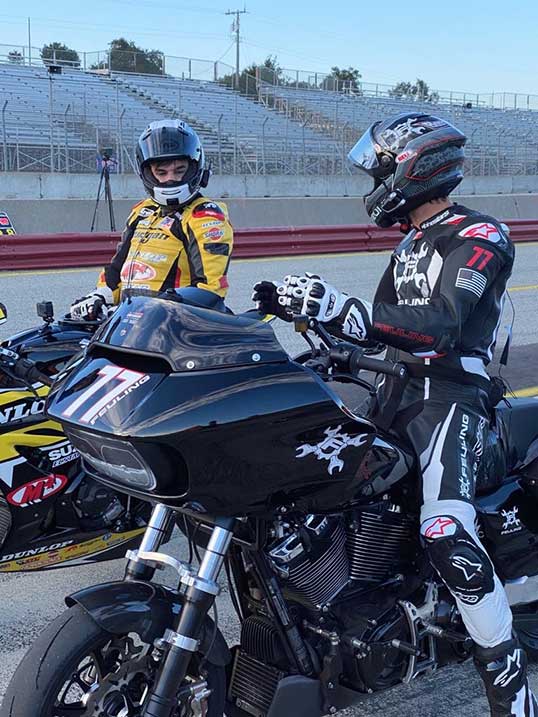
Talk To Me: Cardo Systems Set For MotoAmerica Sponsorship Again In 2021
Motorcycle Communications Technology Company Returns As Sponsorship Partner For Premier Road Racing Series
MotoAmerica, North America’s premier motorcycle road racing series, has announced that Cardo Systems will again be a series sponsor for the 2021 MotoAmerica Championship. Cardo will continue to showcase its advanced PACKTALK lineup, which features industry-leading mesh connectivity, to road racing fans via the MotoAmerica Series.
Cardo Systems specializes in the design, development, manufacturing and sale of state-of-the-art communication systems for motorcyclists. Since inception in 2004, Cardo has pioneered the vast majority of innovations for Bluetooth motorcycle communication systems – having created the first rider-to-rider product and innovating connectivity with the introduction of its Dynamic Mesh Communication (DMC).
“Last year we worked with Cardo for the first time and it was great for both of us,” said MotoAmerica Senior Sponsorship Manager Lance Bryson. “We used the Cardo systems for some TV features on our broadcast and MotoAmerica Live+ programming where we were able to really show how well the system works with riders talking to each other while riding around the track. The 2021 season is going to be a good one and we’re happy that Cardo is along for the ride with us.”
“We’re excited to be returning for another year with MotoAmerica,” said Dan Emodi, Cardo Systems’ Chief Marketing Officer. “The series provides an incredible platform to not only showcase our product’s capabilities, but to reach and engage passionate motorcyclists that are always looking for the latest and greatest motorcycle accessories.”
As the category leader, Cardo offers a wide range of products designed for multiple use cases. Cardo’s FREECOM line offers three variations of Bluetooth communication systems, while the PACKTALK line utilizes the “always on” mesh connectivity via Cardo’s proprietary DMC.
For more information visit cardosystems.com.
About Cardo
Cardo Systems specializes in the design, development, manufacturing and sale of state-of-the-art wireless communication and entertainment systems for motorcycle riders. Since inception in 2004, Cardo has pioneered the vast majority of innovations for Bluetooth motorcycle communication systems. The company’s products, now available in over 100 countries, are the world’s leading communication devices for the motorcycle industry.


